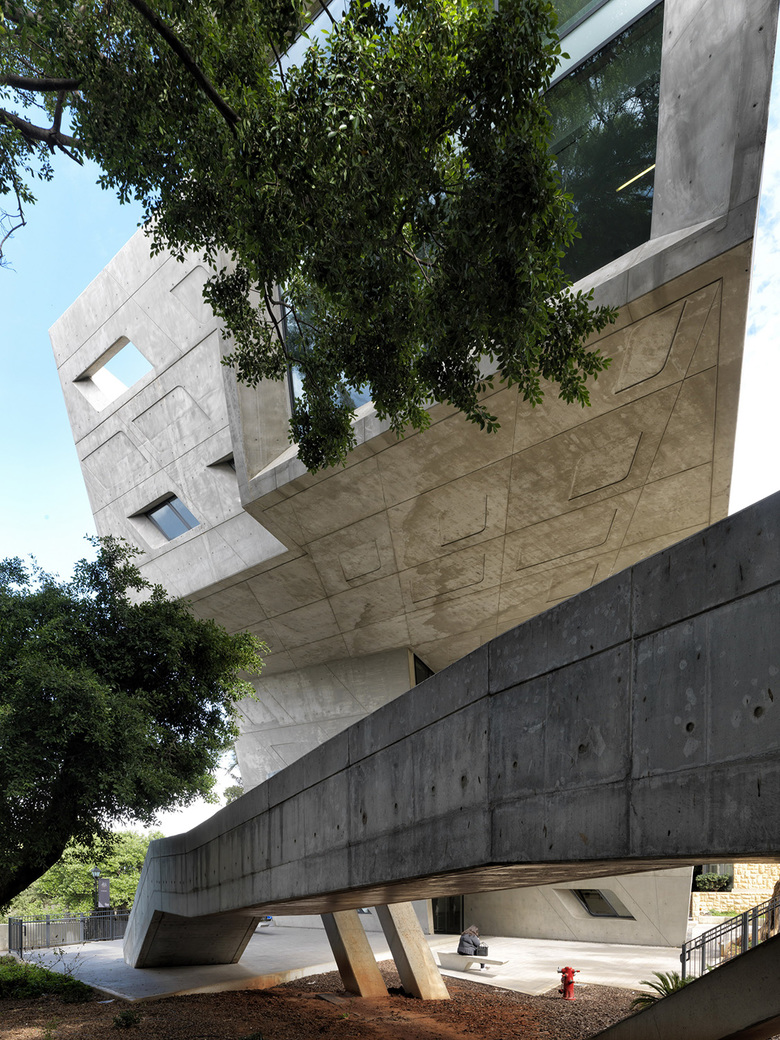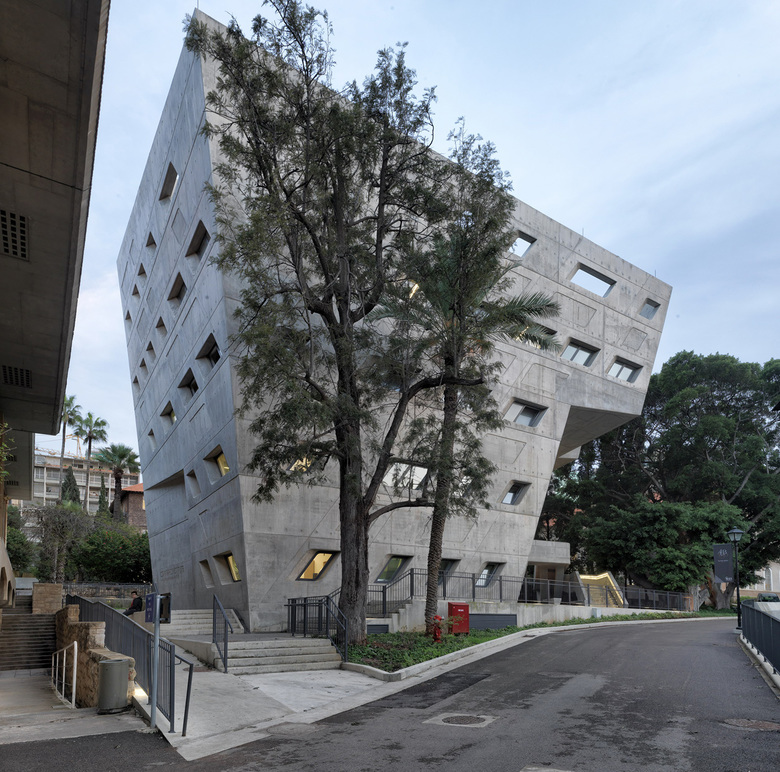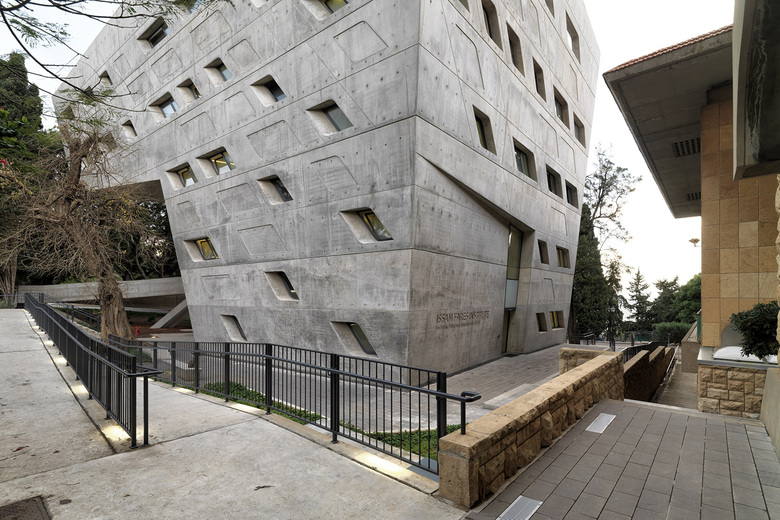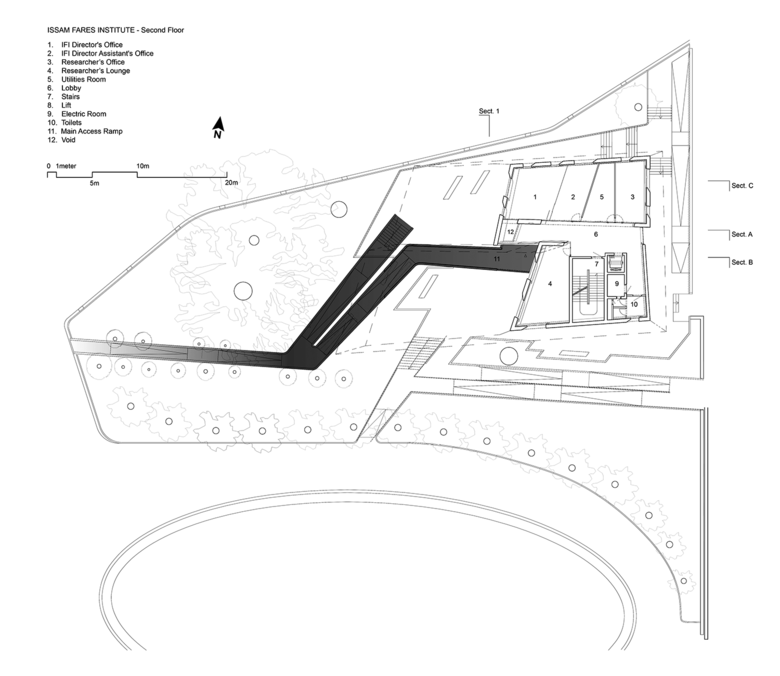2016 Aga Khan Award for Architecture
Issam Fares Institute
Zaha Hadid Architects
7. October 2016
Situated on the upper campus, together with four historic buildings, the Issam Fares Institute crowns the equally historic Green Oval, one of the most important open green areas on the AUB campus. (Photo: Aga Khan Trust for Culture / Cemal Emden)
This 2016 Aga Khan Award for Architecture recipient, a new building for the American University of Beirut’s campus, is radical in composition but respectful of its traditional context.
"This building asserts confidently that we are not a university that stays rooted in time and place; rather we challenge conventional thinking and actively promote change and
new ideas," says Peter Dorman, President of the American University of Beirut (AUB), of the Issam Fares Institute, the latest addition to the AUB. In terms of its form, the building is undeniably bold, yet it also displays a sensitivity towards time and place – towards the context, both built and topographical.
A ramp leads between the centenary aged ficus and cypress trees to connect the research lounges on the second floor directly with the campus. (Photo: Aga Khan Trust for Culture / Cemal Emden)
The context in this case is the AUB’s upper campus, set on a hilltop with views of the Mediterranean. In the immediate vicinity are four historic buildings and some equally venerable c 150-year-old – cypress and ficus trees, as well as one of the most important open areas on the campus, the Green Oval. Responding to the givens of the site, the architects significantly reduced the building’s footprint by cantilevering a large part of the structure over the entrance courtyard – a move that also draws the space of the adjacent Green Oval towards the base of the new building. The existing landscape is preserved, including all of the old trees, which form a kind of datum line determining the height of the institute, as is evident from a look at the south facade. Further connections with the landscape are established by the roof terrace, with its expansive views, and by the circulation ramp that snakes smoothly through the trees to the southern entrance on the second floor.
The project introduces a system of ramps within its site, enabling a connection with the upper and middle campus for pedestrians and wheelchair users. (Photo: Aga Khan Trust for Culture / Cemal Emden)
The Issam Fares Institute – a research centre for public policy and international affairs – has a combined surface area of 3,000m2, divided into six floors. Its facilities include research spaces and administration offices, seminar and workshop rooms, an auditorium, reading room, recreational lounge and roof terrace. The interiors are divided by walls of partially pigmented glass (though the original idea was for the glazing to be clear, for maximum transparency). The structure is of high-quality in-situ reinforced concrete, in tune with the local construction culture of working with concrete, and particularly fair-face concrete.
The total surface of the fair-faced concrete in the building is 6,000 m2, although the construction technology of producing in-situ fair-faced concrete is not new in Lebanon. Credit should be given to the local builders and technicians for the high-quality finishing. (Photo: Aga Khan Trust for Culture / Cemal Emden)
Routes, views and links within the campus converge to define the IFI as a three-dimensional intersection; a central hub for students, faculty, researchers and visitors. (Photo: Aga Khan Trust for Culture / Cemal Emden)
The massing and volume distribution fits well in its topography and the building feels very subtle in its location due to its form and appearance. (Photo: Aga Khan Trust for Culture / Cemal Emden)
Internal partitions are in ink-pigmented glass to enable communication and interaction. (Photo: Aga Khan Trust for Culture / Cemal Emden)
Interior view of the reading room (Photo: Aga Khan Trust for Culture / Cemal Emden)
The building emerges from the geometries of intersecting routes as a series of interlocking platforms and spaces for research, engagement and discourse. (Photo: Aga Khan Trust for Culture / Cemal Emden)
The exposed concrete roof terrace where impressive views can be found, it overlooks the landscape and the Mediterranean sea to the north. (Photo: Aga Khan Trust for Culture / Cemal Emden)
Second Floor Plan
Related articles
-
Issam Fares Institute
on 10/7/16










